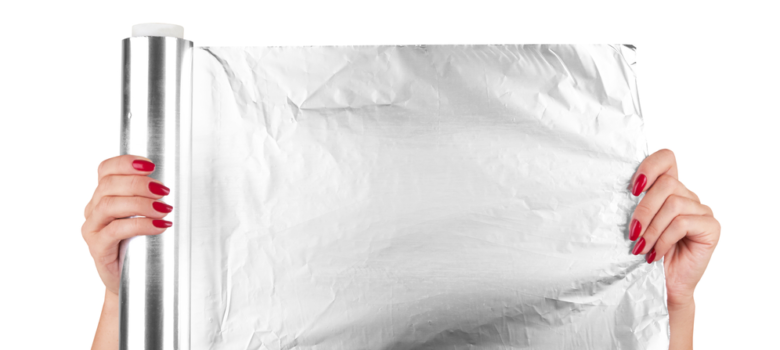
We’re all about energy saving measures here at the Green Age, so we thought it was about time to test out one of the life hacks we’ve been hearing mutterings about on the grapevine – using kitchen foil as a radiator reflector to cut your heating bills. Today we’re pitting them against one of the top radiator reflector products on the market – Radflek.
Radflek Radiator Reflectors
If you’ve never heard of Radflek then you’re about to be bowled over by the simplicity of an idea. Radflek is a specially treated aluminium foil positioned between the back of the radiator and the wall and designed to reflect lost heat back into the room. That’s right, the same principle that causes you to wrap your Christmas turkey in foil can keep your living room warm. You’re the turkey.
External walls can get extremely cold extremely fast, leeching away the warm air heated by your radiators. Think of it like trying to get a glass of fizz for everyone at your New Year’s Eve party, but one really thirsty guy at the back keeps necking all the drinks and you keep having to pour more and more prosecco. Not ideal.
With over 250 5-star reviews on amazon.com and prices as low as £22, it’s hard to argue with Radflek’s credentials. It takes just minutes to install, requires little to no maintenance, and boasts a long lasting coating that prevents oxidation and preserves reflectivity. Owing to its consistent energy savings Radflek can pay for itself within just 1 year, and has a life expectancy of 60 years.
Household Kitchen foil
Youtube, Pinterest and crafty Facebook videos have gotten us all mooning over quick fixes and life hacks – 30 second tips to make your life easier without shelling out on gadgets and gizmos. Kitchen foil goes for about £1 a roll. You can see where I’m going with this.
We get a few enquiries every month about the benefits of fitting aluminium foil behind convection radiators, asking whether or not it actually works, and it’s a tricky one to answer. Some people swear by it, citing startling results; “I’ve put some bog-standard 30cm tin foil behind the centre of the radiator in my extremely cold kitchen, fixing it with a bit of sticky tape at each end, and am astonished at the result. It’s as though I’ve turned on another radiator.”
However, simple aluminium foil is not designed for this kind of constant heat. With no protective treatment, kitchen foil will quickly oxidise and lose its reflectivity, sitting dormant and producing negligible effects. In our opinion, putting kitchen foil behind the radiator is a prime example of false economy as it’s limited effectiveness will drop dramatically within a short amount of time.
Are radiator reflectors worth it?
Radiators. Your heart says turn them on, your bank balance says keep them off. While modern radiators are one of the most cost efficient ways of heating a house, making the most of that heat can become a necessity when you’re trying to keep your energy bills down.
It is really important to manage expectations with any kind of radiator reflector – they aren’t about to half your bills, it’s simply not possible. However they do have the ability to reduce your heat loss and provide a corresponding reduction to your fuel bills. The walls where Radflek will make the most difference is in exposed areas of the property where the radiator is situated on an exterior wall. Internal walls are not heat loss walls, and therefore you won’t save any heat by installing reflectors there. Party walls between properties normally don’t need reflectors either unless your neighbours don’t heat their house or aren’t there all that often. They’re a very decent investment if you’re looking long term, particularly if you’ve got un-insulated solid external walls.
If you’re interested in investing a little money on this simple energy-saving gadget, GreenAge readers can get an exclusive 20% discount using offer code TGA20.
Think we missed something? Do you have a different opinion?
Comment below to get your voice heard…












No Comments yet! Be the first one.